FASTENERS 101™
Fastener Grades, Strength & Materials
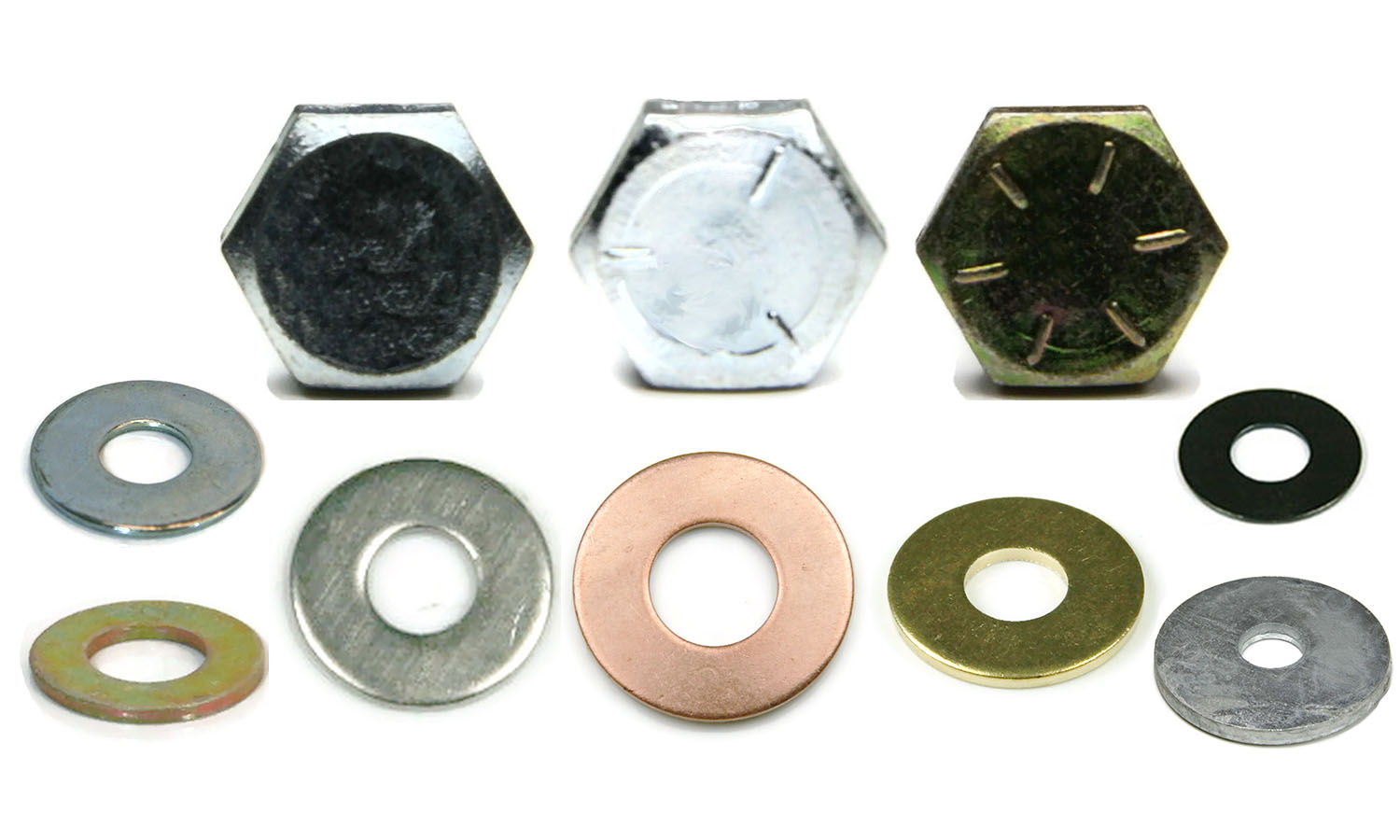
Fastener Material and Finish Information: From Alloy to Zinc
Alloy steel, aluminum, brass, silicon bronze, and stainless steel are just some of the materials that fasteners are manufactured in. The combination of material, treatment, hardening, and coating (aka plating) are essential to determining the strength and appropriate application for each fastener. Already know what kind of material you want to use? Visit our Shop by Materials page to shop only that material!
If you need to replace a nut, washer, bolt or screw it is always recommended to perform an exact or matching swap. If a bolt is stainless steel, we recommend replacing with stainless steel. Furthermore, if a bolt grade is 316 stainless, prized for extra corrosion resistance, we always recommend using 316 when replacing and not a lesser bolt grade such as 304 or 303.
Stainless Steel
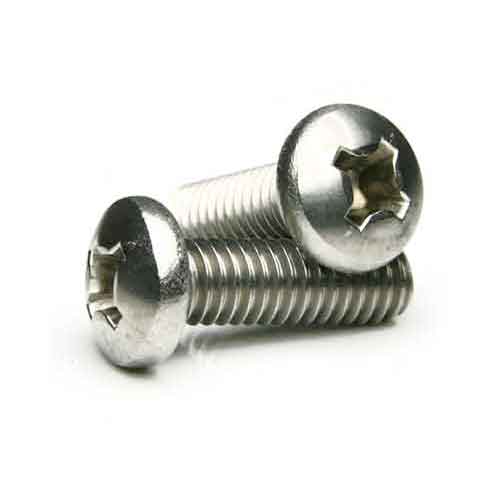
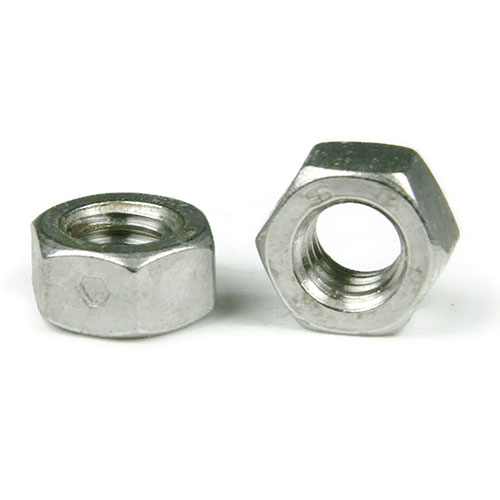
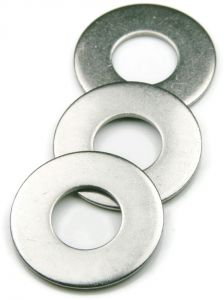
Stainless steel is used primarily for long lasting applications, due to its corrosion-resistant nature and durability. Scratching or burring the metal will not create surface rust as the corrosion resistance exists within the metal itself. Stainless is a soft metal due to the low carbon content, therefore most stainless steel bolts are cold-formed and not heat treated or thru-hardened. Cold forming and threading cause stainless bolts to become slightly magnetic, some fasteners will be more magnetic than others depending on size and how quick the cold forming process is. Stainless fasteners are typically a clean silver color, which also makes them common in finishing and decorative applications. Stainless Steel should never be used with aluminum, galvanic corrosion is likely to occur.
Stainless steel will not rust due to scratching due to the thin layer of chromium creating an invisible protective layer. This thin layer will rebuild itself in the presence of oxygen. Note: If you are not in an oxygen rich environment the material will take longer to rebuild or not rebuild at all. This will leave it open to possible corrosion. Stainless steel can be broken down into three different types: Austenitic, Martensitic and Ferritic.
Austenitic Stainless Steel: (Between 15%-20% Chromium, Between 5%-19% Nickel) - Austenitic stainless has the highest degree of corrosion resistance of the three types. This type of stainless includes these grades: 302, 303, 304, 304L, 316, 32, 347 and 348. They also have a tensile strength of between 80,000 - 150,000 PSI.
Martensitic Stainless Steel: (Between 12%-18% Chromium) - Martensitic stainless steel is considered a magnetic steel. It can be heat treated to increase its hardness and is not recommended for welding. This type of stainless includes: 410, 416, 420 and 431. They have a tensile strength of between 180,000 and 250,000 PSI.
Ferritic Stainless Steel: (Between 15%-18% Chromium) - Ferritic stainless steel has a tensile strength of 65,000 - 87,000 PSI. While it is still corrosion resistant, it is not recommended for areas where corrosion is likely to occur. This material cannot be heat treated. Due to the forming process it is magnetic and not suitable for welding. Ferritic grades of stainless include: 430 and 430F.
Below are some of the many bolt grades of stainless steel that we carry:
18-8 Stainless Steel:
(18% Chrome, 8% Nickel, .08% Maximum Carbon) - 18-8 Stainless refers to 300 series stainless steel. 303 and 304 Stainless are the most commonly listed grades, the standard grade for stainless fasteners. They are corrosion-resistant and durable. They are often used in marine applications in freshwater environments but will not work as effectively in a salt-water environment as 316 stainless. Stainless alloy resists oxidizing and rusting, however it can tarnish over time. Equivalent to metric A2 Stainless Steel.
305 Stainless Steel:
(17%-19% Chrome, 8%-10% Nickel, .12% Maximum Carbon) - This grade has been developed specifically to improve the cold heading qualities of 18-8. Corrosion resistance and physical qualities are equal to Type 304. 305 stainless steel is most commonly used to make deck screws, which are used to fasten wood or composite boards to the main beams of a deck.
316 Stainless Steel:
(16%-18% Chrome, 10%-14% Nickel, .08% Maximum Carbon, 2.00% Maximum Molybdenum) - This grade of steel is used and recommended for applications in severe, harsh or marine environments. Its corrosion resistance is greater than 18-8 stainless, which is why we recommend using 316 stainless steel fasteners for salt-water application. It is important to remember that even the salt in the air near a body of salt-water can do damage to dry applications, so 316 is the material of choice. Common applications of 316 stainless fasteners include use on boats, docks, piers, and pools.
410 Stainless Steel:
(11.5%-13.5% Chrome, .15% Maximum Carbon) - Since this grade of stainless steel can be hardened up to approximately 40 Rockwell C, it is durable in most environments. Harder than 18-8 stainless but with less corrosion resistance, 410 stainless is commonly used to make roofing screws, siding screws and self-tapping (or self-drilling) screws, because it is a harder material than the metal being fastened in these types of applications.
Zinc Plated Steel
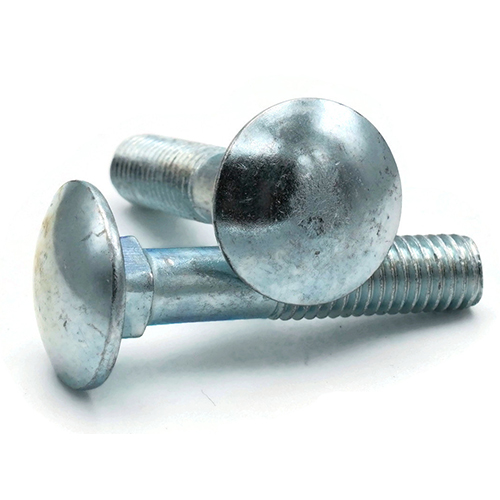
Zinc Plated Alloy Steel is a common material that fasteners are manufactured in. Zinc plating creates corrosion resistance and gives the bolts a shiny finish. Zinc plated alloy steel is most often available in Grade A, Grade C, Grade 2, Grade 5 and Grade 8. Untreated alloy steel fasteners are black.
Bolt Grades & Head Markings:
Head markings on a bolt are a quick way to determine bolt grade. Some bolts will have additional markings that indicate the manufacturer; the most prized bolts have clean heads with limited markings.
Grade 2 / Grade A
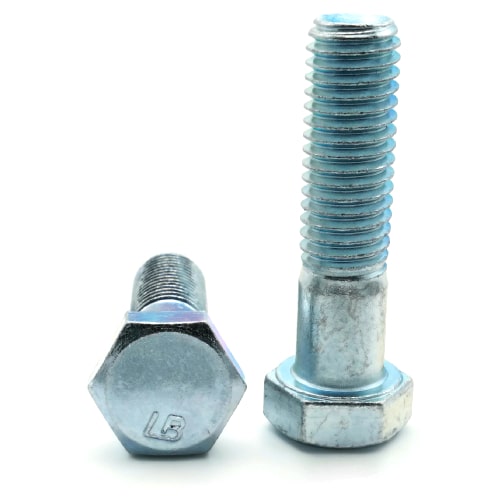
Grade A and Grade 2 are the most common grades of zinc plated alloy steel. Case hardened low or medium carbon steel. No head markings (manufacturers mark may be included).
Grade C

Grade C is a thru-hardened medium carbon zinc plated alloy steel. No head markings (manufacturers mark may also be included). Finish is equivalent in strength to Grade 8 but without the yellow color.
Grade 5
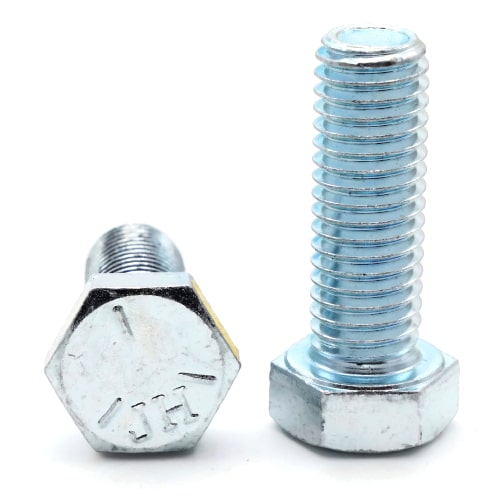
Grade 5 alloy steel is a medium carbon zinc plated alloy steel that is heat treated to increase hardness. Grade 5 bolts have three (3) evenly spaced hash marks on the head markings (manufacturers mark may also be included).
Grade 8 / Grade G
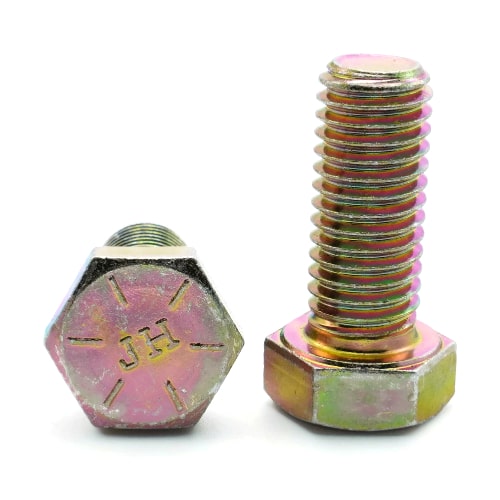
Grade 8 zinc plated alloy steel bolts are thru-heated and thru-hardened with a CR+5 zinc plating. This treatment adds a superior strength and corrosion resistance, to the extent that they are often used for armored vehicles and vehicle suspensions. Grade 8 bolts have six (6) evenly spaced hash marks on the head markings (manufacturers mark may also be included).
Silicon Bronze
Silicon bronze fasteners are made of copper, silicon, and various other alloys such as zinc, tin, iron and manganese. The color of silicon bronze may vary based on the amount of copper in the fastener. Silicon Bronze is superior in corrosion resistance to 316 stainless steel; it is more expensive than most fasteners. Silicon bronze is used in marine environments, corrosive environments, high heat environments, and it is suitable for use in standard applications for aesthetic purposes. Often used in plumbing and electrical applications, silicon bronze fasteners are also found on tattoo machines and in power plants. Silicon bronze is similar in color to copper and is sometimes used in finish applications for the color. Silicon Bronze Fasteners are made from alloy 651 Silicon Bronze.
Brass
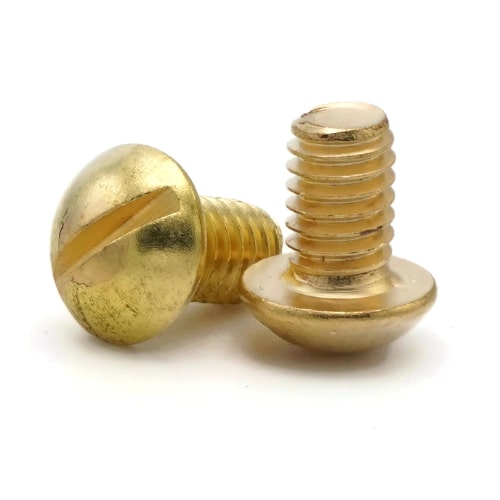
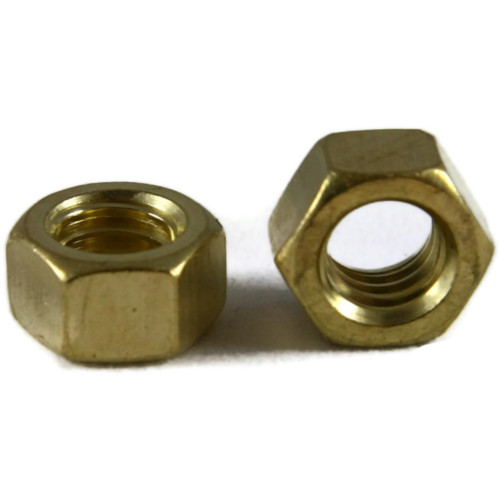
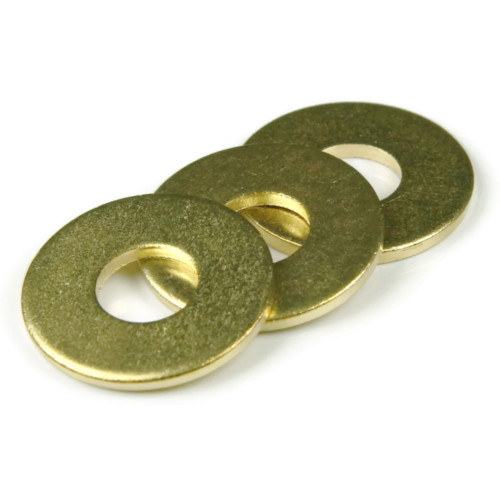
Brass is an alloy made of copper and zinc. The color of brass can vary from dark to light based on the zinc content; more zinc content produces lighter brass. Brass is prized for its corrosion resistance; however it is quite soft so it is not suitable for all applications. Brass conducts electricity and is also a good conductor of heat. It is often used in pipes, weather stripping, trim, radiators, musical instruments, and firearms.
Machined Brass Fasteners (Screws, nuts, bolts, etc.) are made from alloy 360 brass, and non-machined parts like washers are made from alloy 270 brass.
Aluminum
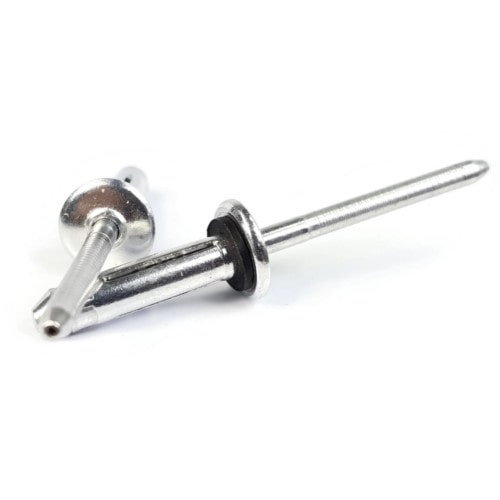
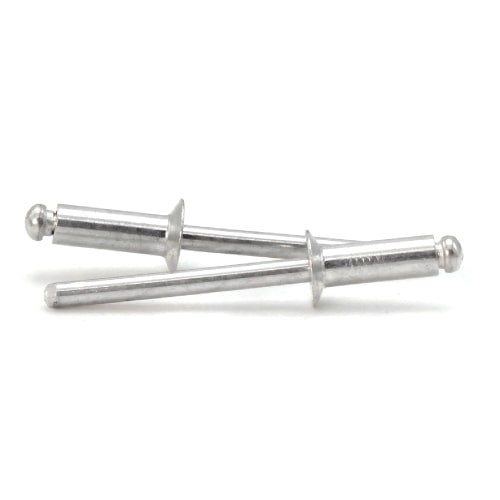
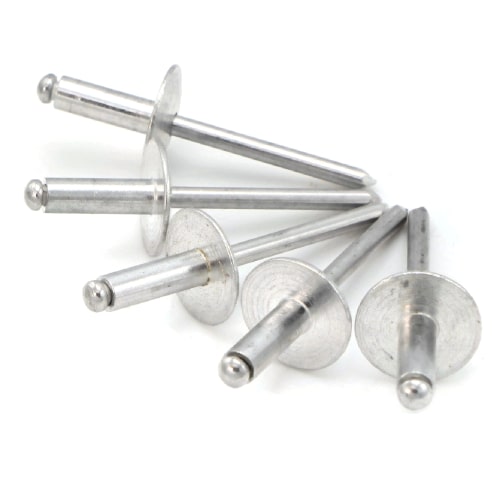
Aluminum is a common material that is very soft and lightweight. Aluminum alloy may be comprised of several materials including iron, manganese, silicon, copper, zinc and silicon. Aluminum rivets are among the most common aluminum fasteners.
Aluminum should never be used with Stainless Steel, galvanic corrosion may occur.
Alloy Steel
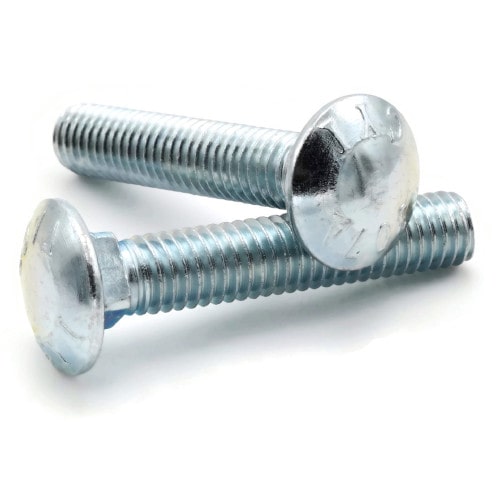
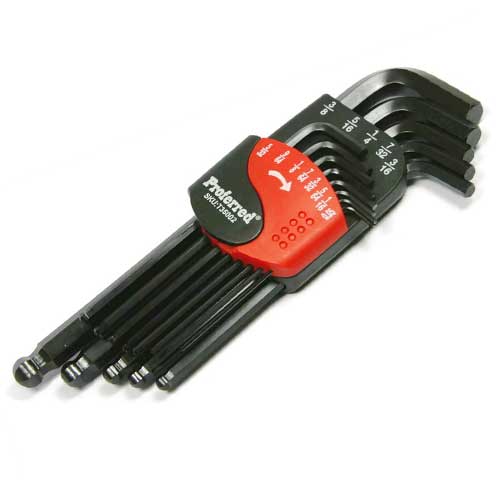
Alloy Steel
Alloy Steel is the most common material that fasteners are manufactured in. Alloy steel fasteners are often treated, coated or plated with zinc for additional corrosion resistance. Alloy steel is used for the hot dipped galvanized process, treated in a molten zinc bath which creates a tightly bonded alloy finish. Alloy steel is most often available in Grade A, Grade C, Grade 2, Grade 5 and Grade 8. Untreated alloy steel fasteners are black.
Other Common Metals
Titanium
Titanium is extremely corrosion resistant with superior strength to weight when compared to aluminum. The tensile strength of titanium can reach or exceed 150,000 PSI. They work well in high temperature environments and is used largely by the aerospace industry. They are also used extensively in the chemical industry due to their strong resistance to corrosion and oxidizing chemicals.
Copper
Copper is used in very specific applications. They are highly conductive and corrosion resistant. They are often used for electrical and thermal industries. Fasteners in this variety are not magnetic and can only be hardened by cold-forming. Copper has the tensile strength of around 30,000 PSI.
Nickel
Nickel works well in high and low temperature environments. Nickel fasteners are very strong, extra-ordinarily tough and ductile. Nickel is often used with other materials to create an even stronger fastener. Fasteners made of nickel-copper alloys have a tensile strength of roughly 80,000 PSI while fasteners made of nickel-copper-aluminum have a tensile strength of around 130,000 PSI. While fasteners with high nickel content offer excellent strength and corrosion/oxidization resistance but are typically not used consistently due to their high cost.
